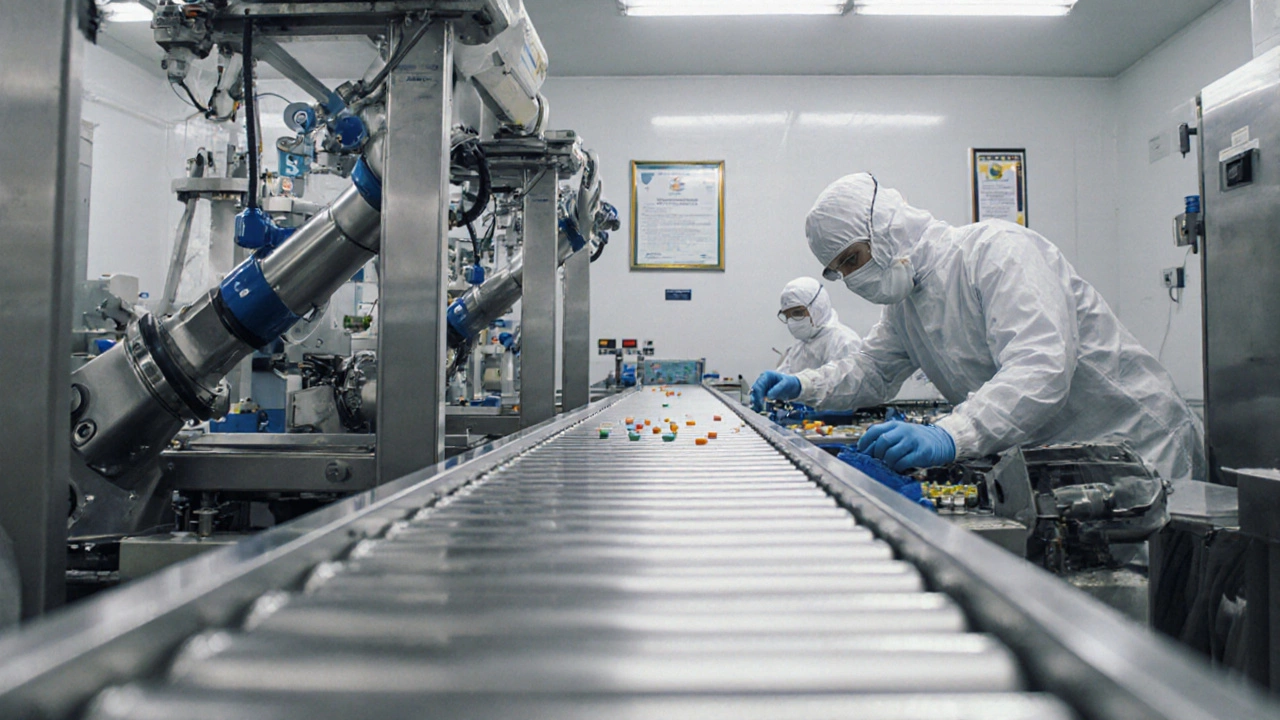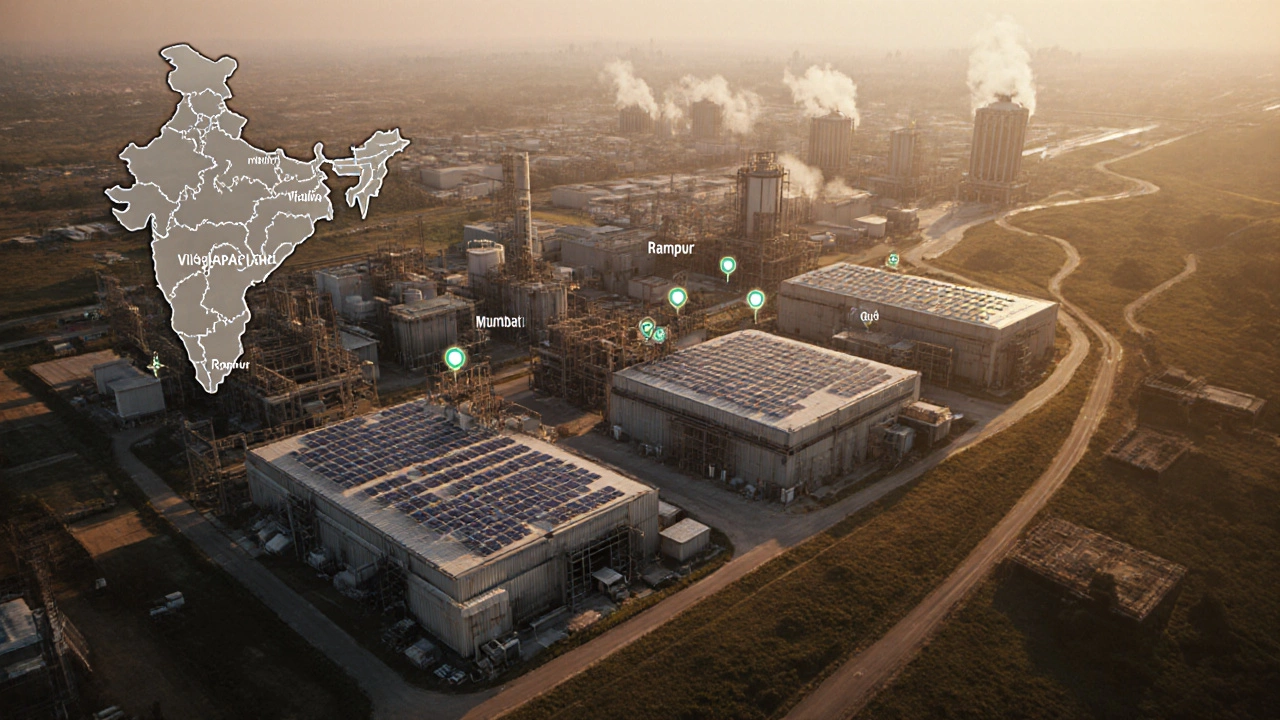When you hear Pharmaceutical manufacturing in India is a massive industry that touches everything from everyday painkillers to life‑saving vaccines. If you’re wondering which facilities are pulling the biggest strings, you’ve come to the right place. Below you’ll get a clear picture of the top pharma plants India rely on, why they matter, and how you can spot the next big player.
Why India’s Pharma Sector Is a Global Force
India supplies about 20% of the world’s generic medicines and exports roughly $25billion worth of pharma products each year. The country’s manufacturing base grew over 12% annually between 2019 and 2024, driven by a mix of low‑cost labor, strong R&D talent, and aggressive export policies. By 2025, more than 3,000 active pharma plants operate across 19 states, but only a handful dominate the market.
How We Ranked the Plants
To keep the list useful, we looked at four hard‑numbers:
- Annual production capacity - measured in metric tonnes of active pharmaceutical ingredients (API) and finished dosage forms.
- Export share - percentage of total output shipped abroad, especially to regulated markets like the US, EU, and Japan.
- Regulatory compliance - number of US FDA, EU EMA, and WHO GMP certifications.
- Product diversity - range of therapeutic categories (cardiovascular, oncology, vaccines, etc.).
Facilities that scored high on all four made the cut.
Top Five Pharma Plants in India (2025)
Each of these plants isn’t just big; they’re also tech‑forward and export‑ready.
-
Sun Pharma’s Rampur Plant is a 1,200‑tonne API hub that specializes in cardiovascular and anti‑infective drugs. The facility holds US FDA approval for 15 dosage forms and ships to over 50 countries.
-
Cipla’s Goa Facility focuses on respiratory and HIV medicines. With a 950‑tonne capacity, it boasts WHO GMP certification and a 30% export share to the EU.
-
Dr. Reddy’s Laboratories - Hyderabad Plant produces a broad portfolio ranging from oncology to gastro‑intestinal drugs. Annual output exceeds 1,100 tonnes, and the plant holds dual FDA‑EMA approvals.
-
Lupin’s Mumbai Plant is a leader in generic anti‑diabetic and antihypertensive medicines. It runs at 800 tonnes per year and accounts for 22% of Lupin’s total exports.
-
Aurobindo Pharma’s Visakhapatnam Site focuses on injectables and sterile products. The plant’s capacity of 700 tonnes is backed by US FDA and EU EMA certifications, making it a go‑to for biotech contract manufacturing.

Quick Comparison Table
| Plant | Location | Capacity (tonnes/yr) | Major Therapeutic Focus | FDA / EMA Approvals | Export Share |
|---|---|---|---|---|---|
| Sun Pharma - Rampur | Uttar Pradesh | 1,200 | Cardiovascular, Anti‑infective | FDA | 28% |
| Cipla - Goa | Goa | 950 | Respiratory, HIV | WHO GMP | 30% |
| Dr. Reddy’s - Hyderabad | Telangana | 1,100 | Oncology, GI | FDA, EMA | 35% |
| Lupin - Mumbai | Maharashtra | 800 | Anti‑diabetic, Antihypertensive | FDA | 22% |
| Aurobindo - Visakhapatnam | Andhra Pradesh | 700 | Injectables, Sterile | FDA, EMA | 25% |
Emerging Players to Watch
Beyond the giants, a new wave of mid‑size plants is gaining traction. Divi’s Laboratories - Hyderabad has ramped up API production for oncology, hitting a 600‑tonne capacity in 2024. GSK India - Hyderabad Bio‑facility is building a biologics line that will add 300 tonnes of vaccine‑grade proteins by 2026. Keep an eye on these because they’re likely to enter the top‑ten list within the next couple of years.

How to Choose a Pharma Plant for Partnership
Whether you’re a global distributor or a biotech startup, the right plant can make or break your launch. Follow these practical steps:
- Verify regulatory certificates - ask for the latest FDA, EMA, or WHO GMP inspection reports.
- Check capacity flexibility - can the plant scale up production after a successful PhaseIII?
- Assess quality systems - look for ISO9001 and ICH Q10 compliance.
- Evaluate supply‑chain robustness - does the plant have reliable raw‑material sourcing, especially for APIs?
- Visit the site - a short tour often reveals operational hygiene and employee expertise.
Doing this homework saves time and money, especially when you’re dealing with high‑value biologics.
Key Takeaways
- India’s pharma manufacturing base is powered by a few mega‑plants that dominate export markets.
- Sun Pharma, Cipla, Dr. Reddy’s, Lupin, and Aurobindo lead the pack in 2025.
- Regulatory approvals, capacity, and product diversity are the three pillars of a top‑tier plant.
- Emerging facilities like Divi’s Laboratories and GSK India are poised to reshape the rankings.
- When selecting a partner, focus on certifications, scalability, quality systems, and supply‑chain strength.
Frequently Asked Questions
Which Indian pharma plant has the highest export share?
Cipla’s Goa facility leads with about a 30% export share, especially to the EU market.
Do these plants produce biologics?
Aurobindo’s Visakhapatnam site and GSK’s Hyderabad bio‑facility are the primary Indian plants scaling up biologics and vaccine production.
How can I verify a plant’s FDA compliance?
Request the most recent FDA Form 483 and 510(k) inspection reports. They are publicly available on the FDA’s website for each approved facility.
What’s the average capacity of a top Indian pharma plant?
In 2025, the average capacity across the five leading plants is roughly 950tonnes of API and finished dosage forms per year.
Are there government incentives for setting up pharma plants in India?
Yes. The Central Drugs Standard Control Organisation (CDSCO) offers tax holidays, accelerated customs clearance, and R&D grants for facilities that meet export‑oriented criteria.
